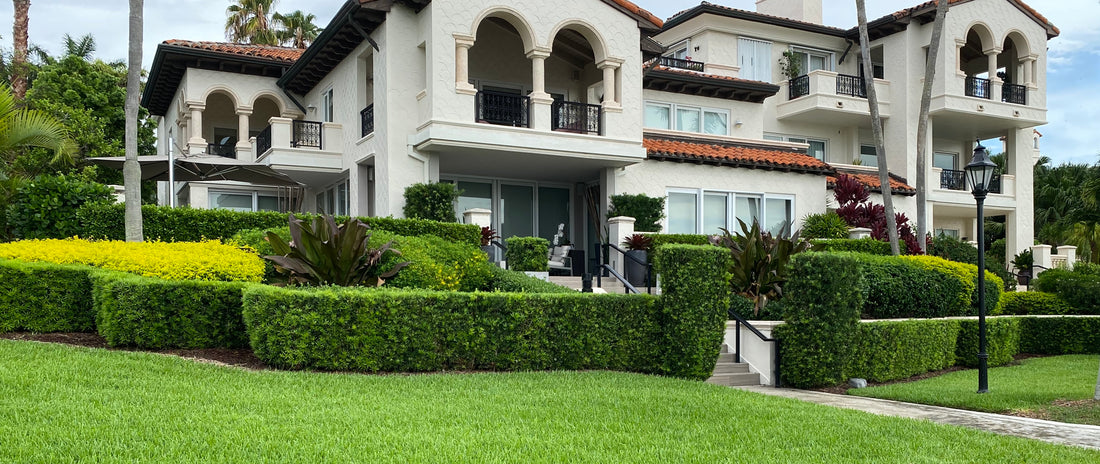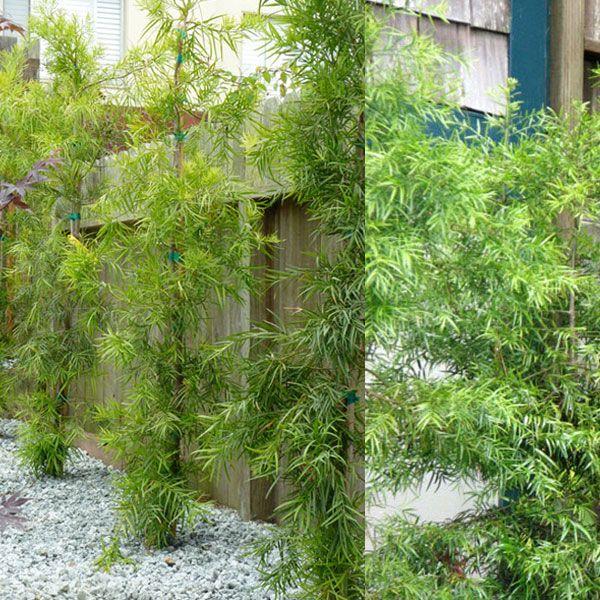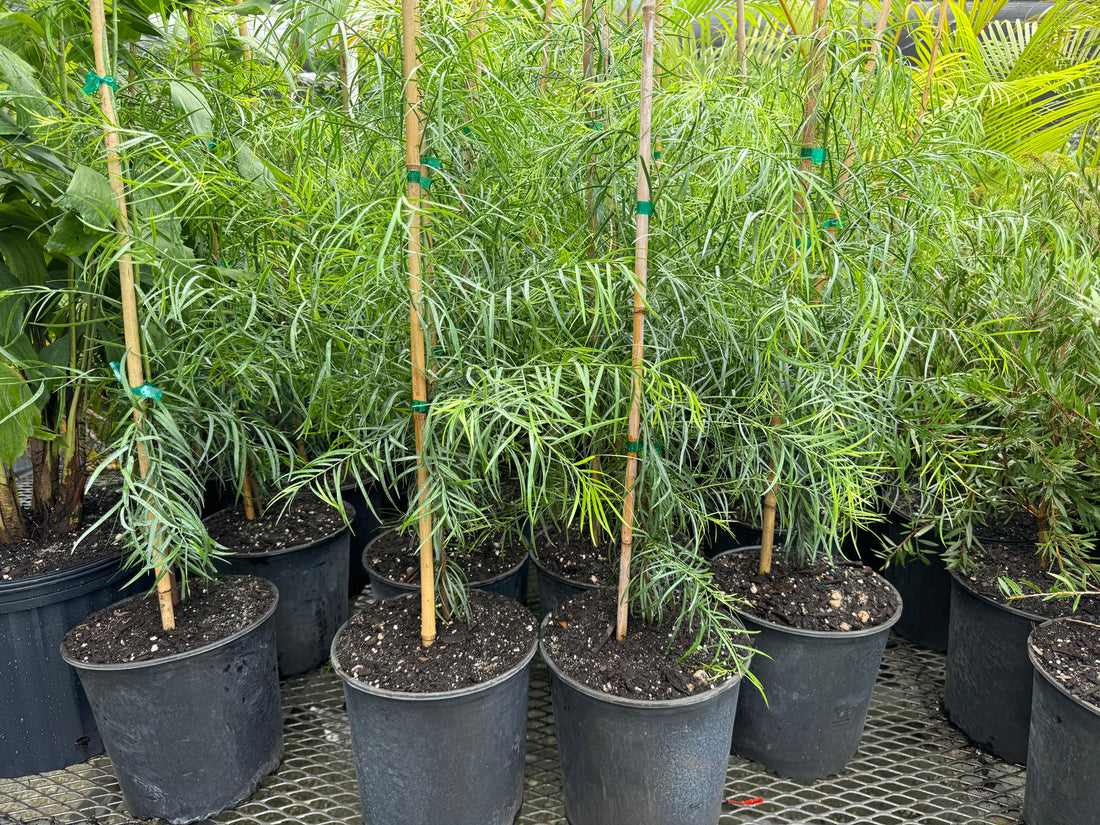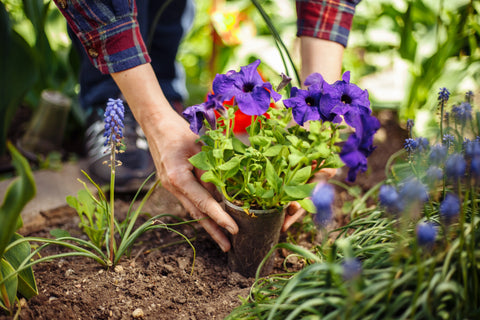2 products
-
Yew Podocarpus Bush Maki, Japanese Yew

 Yew Podocarpus Bush Maki, Japanese YewLandscape Plants
Yew Podocarpus Bush Maki, Japanese YewLandscape Plants- Regular price
-
From
$14.99 - Regular price
-
$16.99 - Sale price
-
From
$14.99
-
Podocarpus Glacillor Tree, Fern Pine Weeping

 Podocarpus Glacillor Tree, Fern Pine WeepingLandscape Plants
Podocarpus Glacillor Tree, Fern Pine WeepingLandscape Plants- Regular price
-
From
$29.00 - Regular price
-
$39.00 - Sale price
-
From
$29.00
Podocarpus Japanese Jew Tree: A Guide to Cultivation and Care
For the gardening enthusiast looking to add a touch of evergreen elegance to their landscape, the Podocarpus macrophyllus, commonly known as the Japanese Jew Tree or Buddhist Pine, is a prime choice. This versatile ornamental tree offers not just beauty but also functionality. In this comprehensive guide, we dive deep into the world of Podocarpus—detailing its benefits, cultivation requirements, and care tips to ensure your garden thrives with these majestic plants.
Introduction
Originating from Japan and China, the Podocarpus Japanese Jew Tree is revered for its dense, conifer-like foliage and adaptability to various growing conditions. A staple in both eastern and western gardens, this tree offers year-round interest and serves multiple roles in a well-designed outdoor space.
Benefits and Uses
Ornamental Value in Landscaping
With its rich, dark green leaves, the Podocarpus tree is a standout specimen that adds a lush, exotic look to any garden. Whether planted in rows to create a feathery hedge or used as a solo accent in a focal point planting, this tree's ornamental value is undeniable.
Screening and Privacy Purposes
Given its dense growth habit, Podocarpus is often deployed as a living privacy shield, perfect for urban settings where space comes at a premium. Not only does it enhance the privacy of your yard, but it also acts as a natural sound barrier.
Bonsai Cultivation
The Podocarpus is also well-suited to bonsai cultivation, a sophisticated art form where trees are miniaturized and shaped over time. The species' trainable branches and pleasing aesthetic make it a popular choice for enthusiasts and pros alike.
Cultivation Requirements
Sunlight and Temperature Needs
While Podocarpus trees are robust, they thrive best in full sun to partial shade conditions. They are tolerant of a wide range of temperatures, making them suitable for many climates, though they favor the warmth.
Soil Type and Drainage
Loamy or sandy soil that ensures proper drainage is ideal for this tree. Waterlogged conditions can lead to root rot, so it's critical to plant your Podocarpus in a spot where the soil drains well.
Watering and Fertilization
Regular watering during the tree's formative years helps establish an extensive root system. Mature trees, however, are fairly drought-tolerant. Balanced, slow-release fertilizers applied during the growing season can enhance the plant's health and vigor.
Pruning and Shaping
Techniques for Maintaining Desired Shape
Pruning is essential to maintain the aesthetic appearance and health of your Podocarpus. Whether shaping it into a hedge or allowing it to grow into its natural conical shape, strategic cuts can promote denser foliage and tailor the plant to fit your garden's design.
Timing and Frequency of Pruning
Late winter or early spring, before the onset of new growth, is the optimal time for pruning. Subsequent light pruning throughout the growing season may be necessary to refine its outline and encourage branching.
Pest and Disease Management
Common Pests and Diseases
Fortunately, Podocarpus trees are relatively free of serious pests and diseases. However, vigilant monitoring for signs of stress, such as yellowing needles or stunted growth, can preempt potential issues.
Prevention and Treatment Methods
Adequate spacing, proper watering practices, and regular cleaning up of fallen debris are crucial preventive measures against pest infestations and fungal diseases. Should problems arise, organic or chemical treatments may be required to manage them effectively.
Tips for Success
Proper Transplanting Techniques
Young trees require careful transplanting with attention to root ball integrity and sufficient watering to take hold in new locations.
Regular Monitoring and Maintenance
Observation is your best tool. Regular checks for nutrient deficiencies, soil moisture, and general plant well-being are key components of good Podocarpus care.
Winter Protection
In colder regions, providing some protection in the form of mulch or burlap wraps can help the tree withstand the chill and come back strong in spring.
Conclusion
The Podocarpus Japanese Jew Tree is a testament to how stunning, low-maintenance landscaping trees can transform a garden space. With the information from this guide and a commitment to attentive care, you can successfully cultivate this fantastic species and enjoy its timeless beauty and functional merits. Embrace the serenity and appeal of the Podocarpus in your personal oasis, and watch as it flourishes under your dedicated stewardship.
Gardeners and landscapers seeking to incorporate a low-maintenance yet elegant addition to their outdoor canvases will find the Podocarpus Japanese Jew Tree—whether used as a privacy hedge or a statuesque feature—an exemplary choice for a fast-growing tree that is both beautiful and robust.






